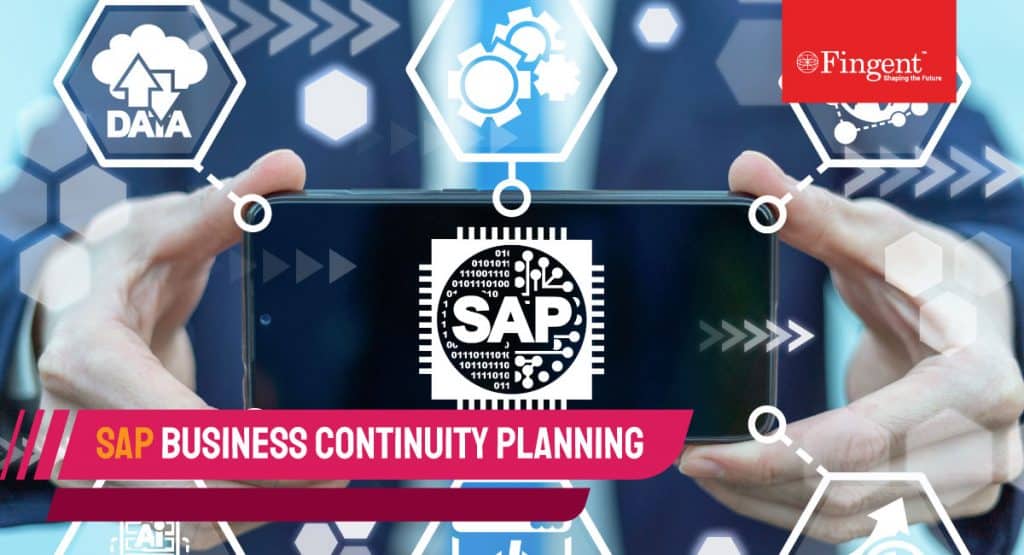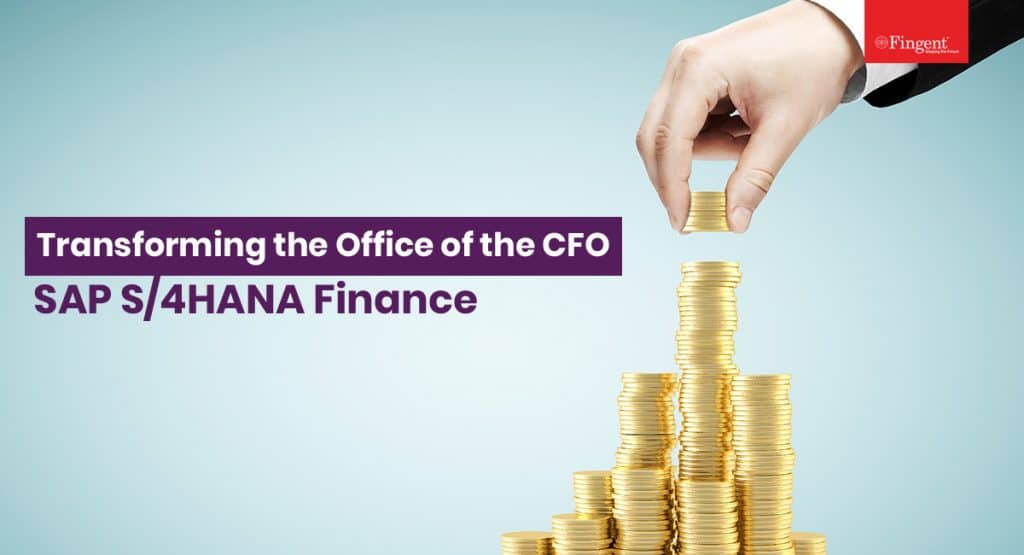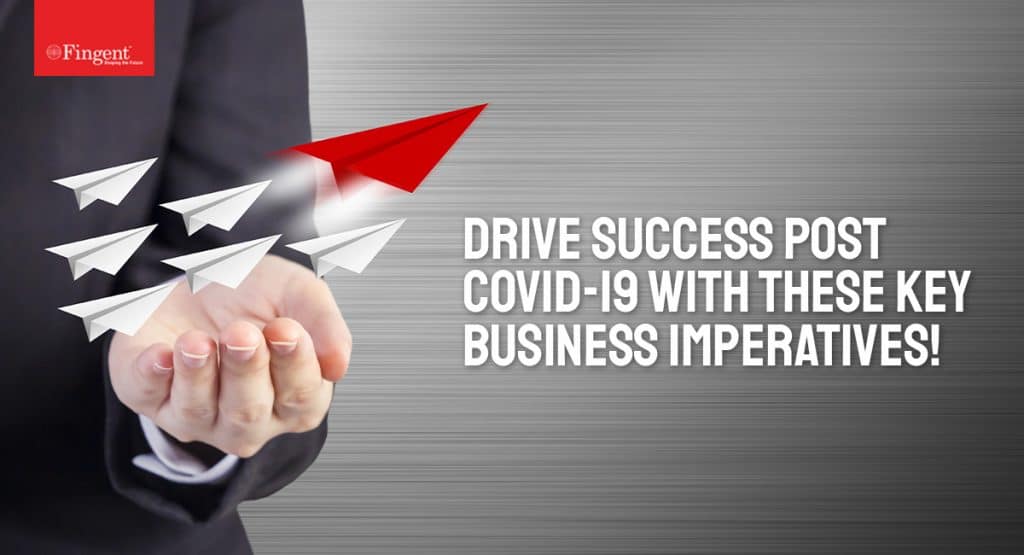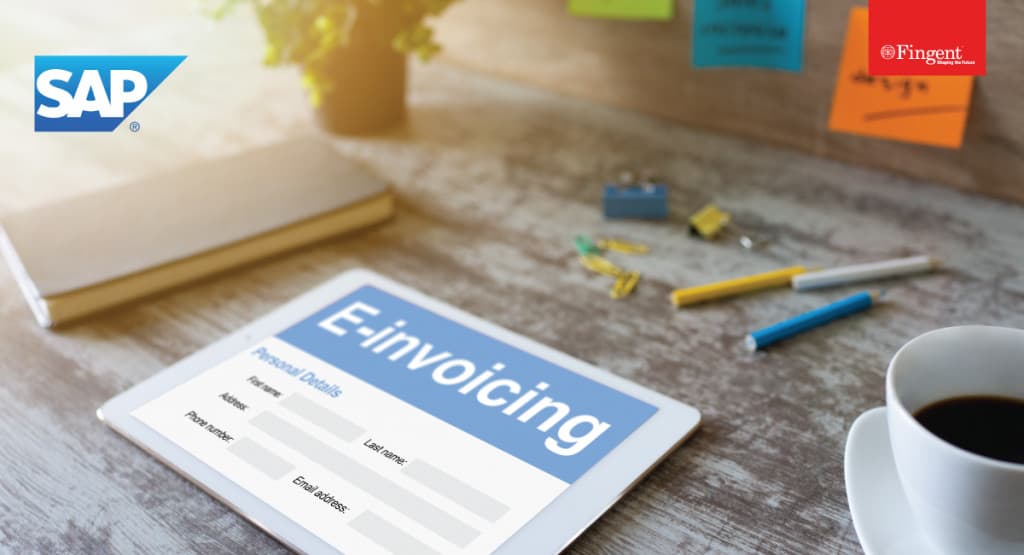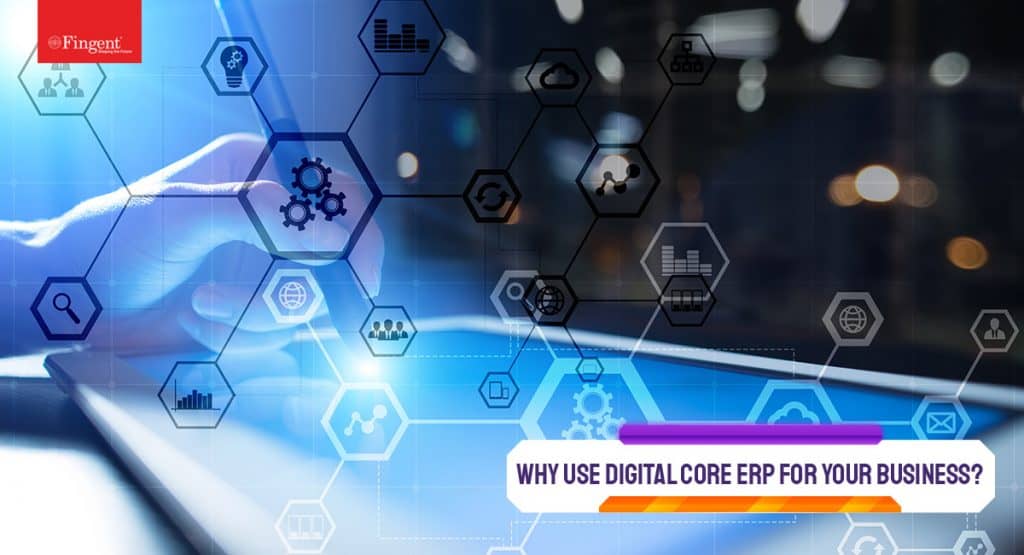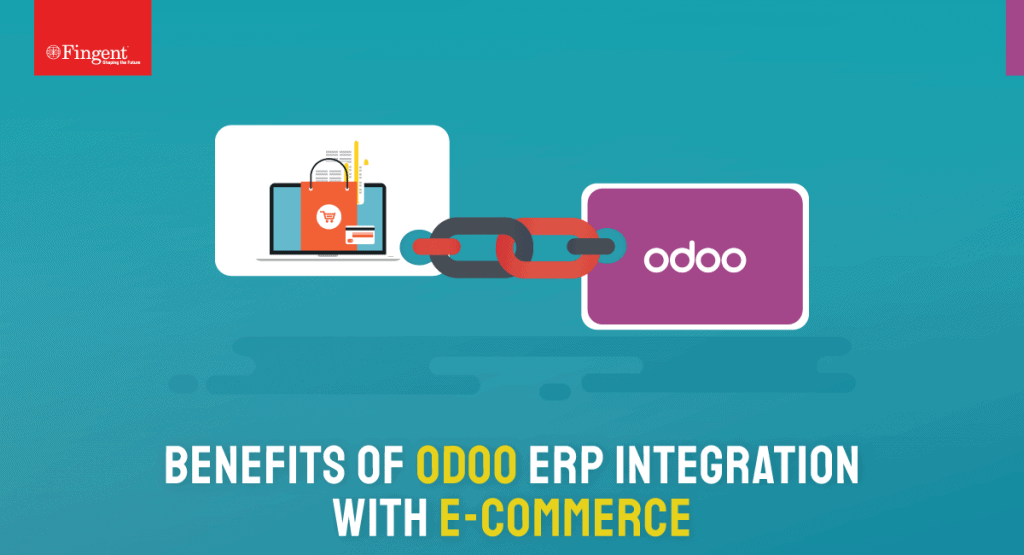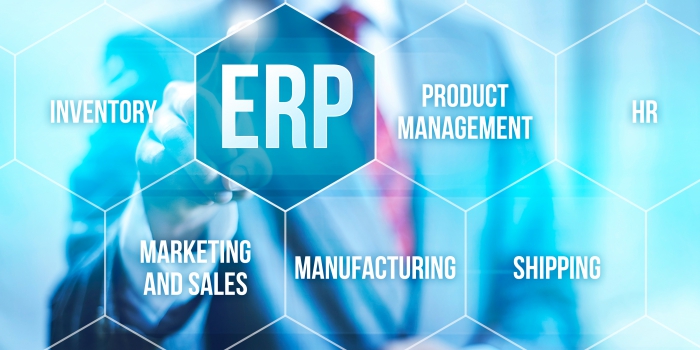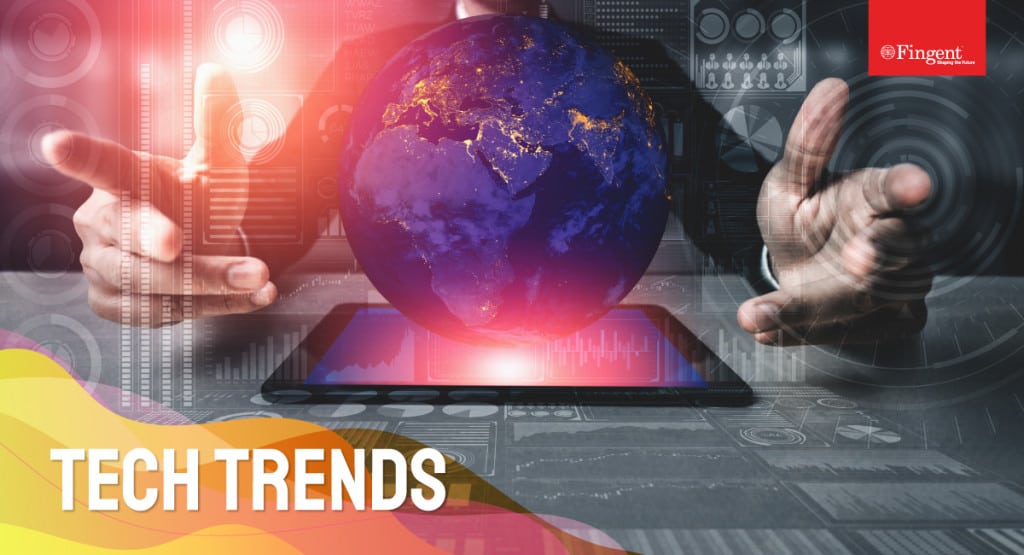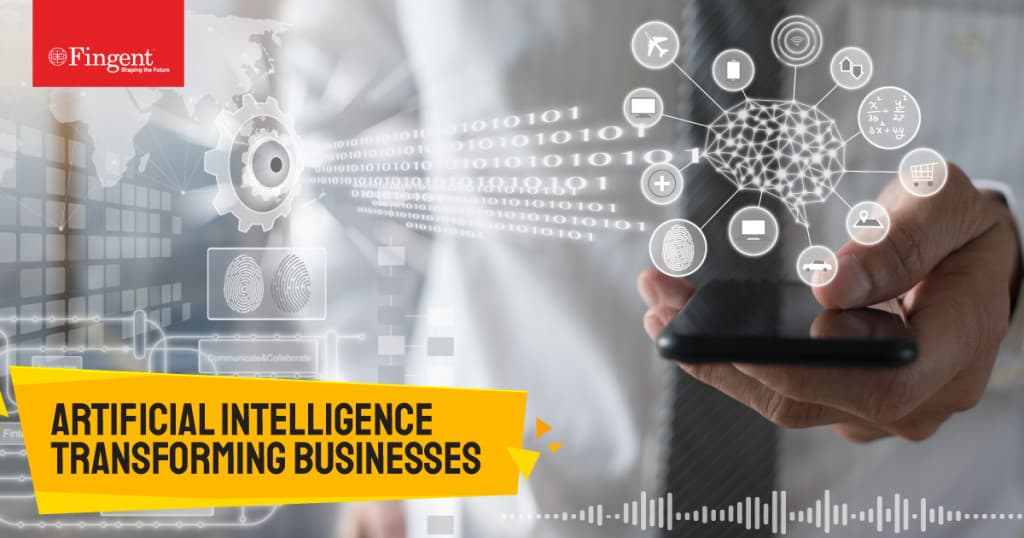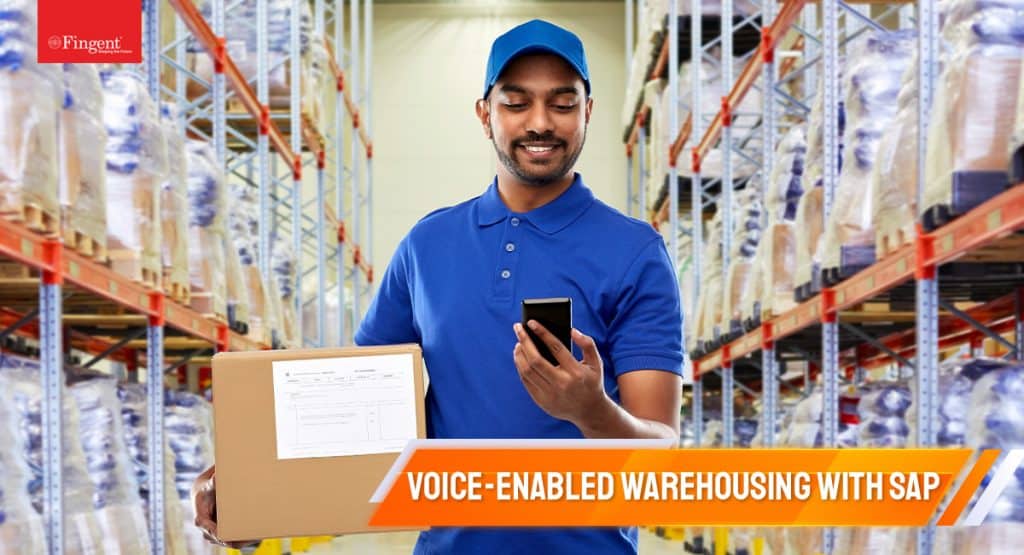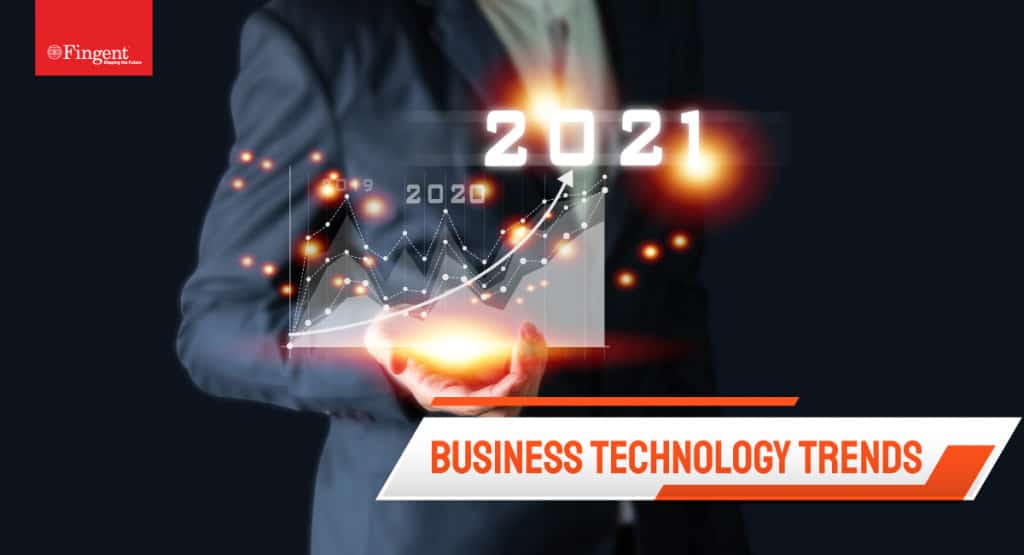Category: Business
How can companies ensure cloud security amid cyber threats and malicious online activities?
The explosion of the cloud has changed the face of the business process as we know it. Nearly 90% of companies rely on the cloud. And yet, there has been some skepticism around cloud security. With recent breaches and technological attacks, maintaining cloud security has become the foremost concern for businesses worldwide.
Security experts at Fingent understand your concern, and so we have put together this blog about the importance of cloud security and the best practices which will ensure that you are secure on the cloud.
Why is cloud security important?
According to a report by Cisco, cloud data centers process 94% of all workloads. Despite the popularity attained by cloud technology, most of these companies are skeptical about cloud security. There is a reason for this. Statista reports the number of data breaches in the U.S alone increased to 156 million in 2020. It has also been reported that hackers attack every 39 seconds. This can be fatal to businesses in the following ways:
1. Managing remote work
Remote work lets you hire talent from across the globe. However, this arrangement entails inherent security risks. Using personal devices may expose your data to malware and phishing attacks. If a malicious virus enters through them into your cloud system, the damage done could cut your company off at its knees.
Read more: Why It’s Time to Embrace Cloud and Mobility Trends To Recession-Proof Your Business?
2. Security breaches
If your company chooses to run your application on a public or hybrid cloud, you are entrusting a third-party to take care of your data. This means you no longer have any control over data security. So it is critical to stay on top of things and ensure that your cloud computing provider is serious about this responsibility. Even when you know your provider will ensure top-tier security, it is your responsibility to verify that your data is secure as a client.
3. Comply with regulations
Data protection standards were put together to ensure the integrity and security of customer data. When you store your customer data on the cloud, it is your responsibility to keep it secure, especially if your organization belongs to a highly regulated industry like finance, insurance, banking, or legal. A data breach will destroy your reputation and brand because external parties will hold you accountable.
4. Build access levels
Unintentional leaks of data will compromise your business integrity and give your competition a leg up. Limiting data access only to those employees who need it can prevent errors that lead to data leaks.
5. Disaster recovery
Disasters such as flooding or fire can strike without warning. Unless your data is secured and protected, you could lose all your data. This may undermine customers’ confidence in your organization, delivering a death blow to your otherwise successful business.
Read more: How Secure is Your Business in a Multi-Cloud Environment
Best practices to ensure cloud security
- Carefully choose a trusted provider
- Review your cloud security contracts and SLAs
- Understand your partnership of shared responsibility
- Control employee access
- Secure user endpoints
- Maintain visibility of your cloud services
- Implement a strong password security policy
- Highest levels of encryption
“Cloud computing is a challenge to security, but one that can be overcome” – Whitfield Diffie, an American cryptographer.
True to Whitfield Diffie’s words, cloud security measures can be taken to encrypt the system that will help achieve adequate cloud security.
1. Carefully choose a trusted provider
Partnering with a trusted provider is the foundation for cloud security. Choose a partner who delivers the best in-built security protocols and follows industry best practices’ highest levels. You need to ensure that you confirm their security compliance and certifications.
Learn more: Take a look at how InfinCE, an infinite cloud platform, ensures secured work-collaboration within an organization and helps enhance company efficiency & growth!
2. Review your cloud security contracts and SLAs
In an event, SLAs and contracts are the only guarantees of service and course of assistance. 62.7% of cloud providers do not specify that customer data is owned by the customer, creating a legal grey area. Read through the terms and conditions, annexes, and appendices to ensure who owns the data and what happens if you terminate the services. Also, seek clarity on visibility into any security events and responses.
3. Understand your partnership of shared responsibility
When you tie-up with a cloud service provider, you enter into a partnership of shared responsibility for security implementation. Understanding the shared responsibility involves discovering which security tasks you will handle and which your provider will handle. It is important to ensure transparency and clarity in your partnership of shared responsibility.
4. Control employee access
Implementing strict control of user access through policies will help you manage employees who attempt to access your Cloud services. Cloud security best practice starts from a place of zero trust. Afford user access to data and systems only to those who require it. To avoid confusion and complexity, create well-defined groups with assigned roles. This will allow you to add users directly to the group rather than customizing access for each employee.
5. Secure user endpoints
Since most of your users access your cloud services through web browsers, it is crucial to introduce advanced client-side security to keep it protected from exploits. Implementing endpoint security solutions that include firewalls, antivirus, intrusion detection tools, and more will help to protect your end-user devices.
6. Maintain visibility of your cloud services
Remember, you cannot secure something that you cannot see. Using multiple cloud services across various providers and geographies can create blind spots in your cloud environment. Make sure you implement a cloud security solution that provides visibility of your entire ecosystem. You can then implement granular security policies to mitigate a wide range of security risks.
7. Implement a strong password security policy
Strong password security may sound basic, but it is an important element in preventing unauthorized access. Have a strong and strict password policy. To defend against most brute force attacks, enforce a rule that users update their password every three months. You may also implement multi-factor authentication. This would require a user to add two or more pieces of evidence to authenticate his/her identity allowing you to trust your users while ensuring that they are authorized users.
8. Highest levels of encryption
Your data may get exposed to increased risk while sending it back and forth between your network and the cloud service. You must consider using your own encryption solutions for data, both in transit and at rest. Encryption keys will help you maintain complete control over your data.
Read more: 6 Proven Ways for Businesses to Combat Cloud Security Risks
Don’t wait till it’s too late!
You never know when a stealthy hacker could attack your business and make you go under. All organizations, independent of their size, can benefit from these best practices and improve their cloud usage security.
At Fingent, our custom software development experts go above and beyond to ensure that your business is hacker-proof and secure. If you need to discuss cloud security options, do not put it on the back burner! It could creep up on you and set your whole business afire, ruining your competitive edge and spelling doom for the future. Call our experts and discuss your options today.
Stay up to date on what's new

Featured Blogs
Stay up to date on
what's new



Talk To Our Experts
How to gain maximum value from technology investments for your business?
The slow economy stemmed from the COVID-19 pandemic is forcing organizations to identify and cut all unnecessary costs. Unfortunately, technology investments also fall prey to these budget cuts. It happens when businesses invest in technology without adequate planning.
According to a survey, 29.2% of respondents holistically examine their technology usage while searching for efficiencies. It may mean canceling or delaying new projects and purchases or reducing or canceling maintenance and support contracts for existing investments.
Research by Accenture reveals that while 47% of the companies are building their future growth strategies on mobility and technology, considering inefficient technology as one of the top hindrances to their growth. It is clear that IT-led innovation is the need of the hour, and 82% of companies are investing specifically in technology for improved growth.
Simply put, now, it is crucial to improve the return on investment of resources, optimize costs, and select the right solution when making sourcing decisions.
Read more: Navigate The Business Impact Of COVID-19 With These Hot Technologies
Here, we share a few tips to help you gain full value from your technology investments.
Ways to optimize costs
Gartner reveals that optimizing costs is essential for businesses and is one of the best ways to control spending and attain cost reduction while maximizing business value.
Optimizing costs should take into account:
- Automating and digitizing business operations
- Simplifying and standardizing applications, platforms, processes, and services
- Obtaining the best terms and pricing for business purchases
While this means ensuring that technology investments generate the maximum possible value, it also means cutting costs and considering how each technology investment drives business value.
Some technology may be expensive, but it doesn’t mean that it isn’t providing value to the organization. Expensive technology may already be optimized because of the value it generates, while inexpensive technology may be unused and wasted. Therefore, it is important to make the right decisions regarding purchasing hardware, software licenses, or cloud services contracts.
Once you have identified and mitigated what you do not need and what you need, there are no more costs to reduce. It is time to look at how to optimize technology assets.
Ways to get the most out of your tech investments
Despite the cutbacks and search for savings, many organizations continue to invest in technology projects and accelerate their digital transformation initiatives. However, even with the economic slowdown coupled with pandemic-related uncertainties, organizations that have performed well during 2020 are looking to increase resilience by reducing risks and demanding shorter ROI periods on investments.
That said, the key to maximize ROI is preparation. It is essential to know that you’ve selected the right solution and are ready for implementation. Several surveys done in the past suggest that the software chosen is rarely the reason for any IT project’s failure. And a few leaders even agree with this, revealing a lack of investment in preparation, project management, and implementation. Even the simplest of IT systems require some amount of work to install and configure. So, the more complex your environment is, the more careful you will have to be.
Read more: 11 Practices Followed by Leaders to Build Resilience and Ensure Rapid Business Recovery
Key factors to consider while developing a technology strategy to improve corporate performance are:
Investment profile: Your management team must identify your IT investment percentage (allocated to build significant capabilities) versus the foundational investment. Ideally, foundational investments should not be more than 40% of the total annual investments.
Organization focus: You must identify whether a significant portion of your internal resources aims to drive innovation or growth. Also, find out if you have the proper operating processes in place to drive these investments.
Tenure: You will have to figure out if your workforce has the right experience and skills to achieve the target.
Investment economics: Move over traditional measures and instead identify newer ways to evaluate your projects and investments.
A few technologies worth investing
Following are some of the technologies worth investing in the present business scenario:
- Artificial Intelligence (AI)
- Blockchain
- Internet-of-Things (IoT)
- Cloud
- Cybersecurity
- Self-driving technology
- Streaming media
Tips for getting maximum value from technology investments
To get maximum value from your technology investments, you should:
- Be prepared with clear objectives and outcomes. You must ensure that your vision aligns with that of the new technology vendor.
- Ensure that you have people, processes, and governance for leveraging the technology when deployed, reducing the time to both value and ROI.
- Identify and assess your data sources’ quality to develop appropriate metrics for accuracy and completeness of data and check for any improvements.
- Invest in the implementation and system or process integrations to make sure they are carried out successfully. If you are using any third-party service provider for the implementation, ensure that you hire a reliable and trained team like Fingent.
- Identify users and key stakeholders and invest in their time to maintain the system.
- To reap benefits early in the project and demonstrate the value of initial investments, take a phased approach. Phasing could be by business unit, geography, or environment depending on the organizational structure and business goals. This will ensure that the project is manageable.
- Provide both initial and ongoing training in phases to allow end-users to familiarize themselves with the features and functionalities they have learned about before undergoing further training. That said, make sure the new users are also appropriately trained.
- Ensure that third-party consultants have completed their vendor training or certification programs before allowing them to use your tools. Also, check if you are using the latest version of the tool. If needed, arrange for additional training.
Read more: Fingent Speaks: What it Takes to Build a Successful Digital Transformation Strategy
Be smart with your tech investments
With technology and digital transformation becoming more pervasive across all industries, technology investment can make a huge difference in winning or losing a business. By focusing on the tips discussed in this article, companies can maximize value from their technology investments.
Technology wins only if it can appease users. A bad customer experience forces the customer to switch from vendor A to vendor B. Not only should you identify and invest in the right technology, but make an emotional connection to craft human experiences that drive customer satisfaction and differentiate you from your rivals.
Fingent top software development company helps you make a fortune out of tech investments by helping you leverage the latest technology trends. Our business technology consulting services focus on helping businesses tackle technology problems, attain business objectives, and derive value from tech and IT investments. Chat with an expert to learn more.
Stay up to date on what's new

Featured Blogs
Stay up to date on
what's new



Talk To Our Experts
Why partner with an SAP AMS provider like Fingent
SAP AMS provides many benefits in managing and maintaining a company’s SAP ERP system. IT management’s role in companies has changed dramatically during the pandemic. The demand for SAP AMS (Application Management Services) is no different. As a result, applications must be adapted and kept up-to-date with the latest technological developments. Moreover, problem-solving takes time. This is a risky situation for businesses that are dependent on perfectly functioning IT.
Therefore, it is clear that to derive all those benefits from Application Management Services (AMS) while managing complex SAP applications would require an expert technology provider. An experienced partner like Fingent top software development company, can ensure successful SAP application support and management. Fingent is a certified SAP Silver Partner authorized to deliver a defined SAP application support process. This blog discusses the top six benefits of working with an SAP AMS provider. Let us begin by understanding what AMS is and why it is crucial for your business.
What is SAP AMS, and why is it important?
SAP Application Management Services (AMS) are processes used to maintain, enhance and manage enterprise SAP environments. It includes development, implementation, testing, maintenance, and support. These services can be delivered by a qualified consultant that can leverage their expertise and business knowledge to provide maximum value to your company. Because they do this repeatedly, the time value is saved. An AMS provider gives you the ability to be more strategic with your SAP solution.
Read more: What is Business Process Expertise in SAP and Why You Need it
Here are three reasons that make AMS vital for your organization:
- Your IT becomes more strategic and less tactical
- Tailored AMS solutions can meet your specific business needs
- You will receive 24/7 assistance for your applications
Top six benefits of partnering with an SAP AMS provider
Gaining control of your digital landscape is imperative for business success. You will find it challenging to meet business requirements if your application demands too much attention. Working with an AMS provider allows your IT team to focus on strategic projects, giving your business the needed technology boost. Here are some key benefits of working with an SAP AMS provider:
1. Enhanced flexibility
We live in a world where you cannot predict what might turn everything on its head. This presents a need to be flexible in business. No matter which industry you are from, you are expected to adapt to any new situation and forge ahead. In other words, the more flexible and adaptable your business is, the more successful it will become. This makes it a smart move to keep up with new solutions constantly. Partnering with a capable SAP AMS provider will reduce the burden of suddenly having to implement more extensive projects.
2. Strategic overview
A mature SAP AMS provider will know what is essential to obtain more value from your SAP solution. With that aim, the provider will enable your organization’s IT team and resources to be more strategic than tactical. A good AMS provider will ensure that they fit seamlessly with your IT staff as an extension that enables your team to drive and deliver value-added SAP solutions.
3. Round-the-clock, follow the sun operation
Businesses looking for highly efficient, stable, robust, and cost-effective operations of their SAP environments must work with SAP-certified partners to enjoy maximum benefits. Most SAP AMS providers offer maintenance for daily operations, 24/7 production support, database services, etc. However, supporting more critical aspects such as functional and technical consulting of various SAP modules requires an experienced AMS provider who can bring in the prowess to turbocharge your applications’ landscape.
Fingent as a certified SAP Silver Partner delivers beyond the promise of regular maintenance. You can rest assured of an infrastructure that is ready to meet future challenges.
Read more: How SAP Supports Effective Business Continuity Planning
4. Tailored AMS solutions to fit your business requirements
The ideal SAP AMS partner knows your business so well that they will quickly adapt to fit your needs. Such knowledge about your organization is gained over time by maintaining a long-term relationship with your company. When you work together in partnership, you can define a right-sized and right-stored delivery model that perfectly fits your organization’s specific needs. A wide range of AMS solutions along with a capable AMS provider offers the possibility to custom-make your solution package to fulfill your unique requirements.
5. Well-equipped to positively improve ROI
Many successful organizations look for new and innovative ways to help them improve their ROIs. Partnering with an SAP AMS provider will help your business adopt new technological changes without requiring to train your employees rigorously. The AMS provider can help your business handle demands more productively. Well-maintained AMS can generate automatic reports that can help your business determine the actions taken to improve your ROI.
6. Save money with AMS
Working with an SAP AMS provider can help businesses save money. Your organization will no longer have to hire employees to carry out separate tasks. You could hire a team of professionals from your SAP AMS provider and pay only for the services you have used rather than pay for every employee individually. The amount thus saved can be directed to another department and used in the best way to generate more profits for your business.
Choice of SAP AMS provider
Remember, the choice of your SAP AMS provider directly impacts your business operations. To find a perfect match when choosing an SAP AMS provider, you must ensure that they provide deep SAP expertise along with an in-depth understanding of your IT infrastructure and process. Apart from technical expertise, your provider must have the industry know-how to understand your company’s unique needs and possess the ability to add immediate value.
Read more: How Fingent Helps CFOs Gain New Insights and Reliably Enable Key Decisions
We assure you that you can benefit from our SAP AMS approach at Fingent. Our AMS program can help your organization irrespective of your company’s size or your industry type. Fingent’s SAP AMS practice excels at helping you achieve operational and strategic objectives with superior technical expertise and industry knowledge. We ensure uninterrupted business operations and ongoing productivity improvement in your organization. Talk to an expert to learn more.
Stay up to date on what's new

Featured Blogs
Stay up to date on
what's new



Talk To Our Experts
How to plan a successful COVID-exit strategy and get your business on track?
If the 2008-09 global recession was due to financial meltdown and economic vulnerabilities, the 2020 economic crisis stemmed from the global pandemic and subsequent health emergency. Both incidents hold lessons that business owners and leaders should follow to fast-track their organizations’ recovery in 2021.
Read more: 11 Practices Followed by Leaders to Build Resilience and Ensure Rapid Business Recovery
Economic growth in 2021 is likely to improve compared to the growth rate in the second half of 2020. However, it will still be uneven. Additionally, the timing and growth will vary for different products and services and geographic markets.
Given the uncertain recovery of the economy, leaders and business owners need to plan a successful strategy to lead their teams and organizations over the year. The focus should be a forecast of their companies’ revenue potentially earned in every quarter of the year.
That said, the COVID-exit strategy is not straightforward. Leaders and business owners will have to make a few difficult choices.
- How much should my organization change, and how fast?
- How far should I go to change my current strategy and adopt faster and more agile approaches?
These are some of the questions that you’ll probably need to figure out. However, remember that if your organization does not move quickly, it will lose itself in the crowd.
One of the best ways to transform is to apply the “all-in” approach to transformation. It means to go ahead with full speed. Whether your organization’s transformation should be about portfolio moves or performance improvements misses the point. If you want to succeed, you must consider both and make your transformation go big. This approach will help your organization emerge stronger and sustain the competitive edge for a long time.
This article discusses how leaders can build a successful COVID-exit strategy and begin a holistic transformation.
Three fundamental steps that organizations can consider
If your organization is successfully managing portfolio and performance moves simultaneously in a transformation, you can invest in three foundational steps:
- Getting an honest view of the business’s full potential across both portfolio and performance moves.
- Understanding the impact of those moves.
- Creating a program with a proper structure and sequence to maximize value creation.
While understanding the full business potential, leaders must know the importance of setting a high aspiration. According to McKinsey & Company, companies that put their gross transformation targets at 75% of trailing earnings are more likely to create value sustainably.
Incrementalism may be risky for organizations trying to break out from the COVID-19 crisis. Management teams seek safety to confront the current situation and avoid the discomfort of going in for the big moves. In reality, leaders must use this time and opportunity to challenge assumptions and overcome social barriers that block bold moves.
Read more: Top 5 Organizational Imperatives for Business Leaders to Become Winners in the New Normal
Successful digital transformation requires leaders to answer these questions
- Which line(s) of business does my company no longer own naturally?
- Which trends accelerated by COVID-19 could transform my business?
- What are the new efficiencies and business models developed by my company to meet the COVID-19 necessities?
- How can my organization benefit from the advantages of those new efficiencies and business models in the next normal?
- How has my organization’s health changed, and what elements and capability building will be required to maximize the impact of the COVID-exit?
While you are trying to balance portfolio and performance moves, you will also need to consider the sequencing. Portfolio and performance initiatives must go hand-in-hand. You must consider each move by defining the magnitude, timing, and risk of impact.
Read more: Fingent Speaks: What it Takes to Build a Successful Digital Transformation Strategy
According to McKinsey & Co., stand-alone portfolio moves capture less than half of value creation, especially in areas such as deal premiums, performance upside, or growing new business. However, if your strategy is ill-conceived, even stand-alone performance moves can take time and maybe outweighed by acquiring the wrong business lines.
Two cases of “all-in transformation”
While you must consider both portfolio moves and performance improvements, which of these should you execute first? The answer depends on the organization and context.
How and when you implement your transformation elements must be guided by your organization’s various circumstances and potential at any given time.
We’re listing two cases of “all-in transformation” here. Both the examples highlight the significance of sequenced transformation in unlocking business value. In both cases, the organizations identified the required potentials, set high aspirations, and deliberately sequenced the portfolio and performance moves to achieve the results. However, the companies differed in how they advanced from there.
First case:
In the first case, the value creation and its sequencing were as follows:
- The company streamlined its cost structure, focused on resource allocation, and carved out a few of its competing lines after consolidating business units and simplifying the executive team. This reorganization enabled about 10% of total transformation value creation.
- Next, the company improved the effectiveness of its sales force which generated high revenue growth. It also implemented automation and simplifications to reduce overheads and adopted a strategic procurement approach to reduce external expenditure. These operational improvements enabled about 75% of transformation value creation.
- Lastly, the company invested in optimizing firms it had acquired and integrated a similar set of core capabilities.
Second case:
The second case, though an all-in transformation program, took a separate route.
- After a significant merger, the company re-evaluated its core business portfolio and divested non-core business. This approach enabled the organization to focus on financial flexibility by using the proceeds to buy back stock. Overall, this performance move allowed the company about 75% of value creation.
- By streamlining its operations, focusing on revenue growth and margin improvements, the company’s performance transformation enabled about 25% of value creation.
Read more: 7 Ways for Your Business to Overcome the COVID-19 Aftermath
From these examples, leaders need to understand that they cannot choose between a portfolio-first or performance-first approach while planning their exit strategy. The order is not important, but leaders will have to accept that they are going all in, set high aspirations right from the start, and let the realization of full potential determine what happens. Avoiding an ad hoc approach to value creation may have significant implications over the long-term. Research reveals that organizations that go for the “all-in” transformation approach are more likely to show lasting improvements and are nearly three times more likely to be ahead of their competitors.
The takeaway
After a year of uncertainties, CEOs and business leaders are aware that the COVID-exit path will not be easy. However, if companies adopt an all-in transformation approach, they can expect more dynamism and flexibility during the journey.
Read more: 10 Services Offered by Fingent to Prepare Your Business for the Future of Digital Innovation
At top software development company Fingent, we use cutting-edge digital solutions and rapid innovation to help businesses reinvent the future. We’re closely monitoring the situation and helping businesses return to work with our technology consulting and innovation capabilities. Feel free to get in touch with us to know how we can transform your business digitally.
Stay up to date on what's new

Featured Blogs
Stay up to date on
what's new



Talk To Our Experts
SAP IRPA (Intelligent Robotic Process Automation) enables businesses to hyper automate their mundane processes to achieve process excellence, improve operational efficiency, and augment human intelligence.
How businesses can successfully attain hyperautomation with SAP IRPA
The concept of hyperautomation has created a buzz across the business landscape. As more and more businesses turn to hyperautomation as a solution and adopt RPA, you must be eager to know what it is and if you need to implement it in your business. RPA, IRPA, SAP IRPA … It can get a little confusing, so this blog will aim to decode all this for you and help you on your journey to hyperautomation. We have compiled a list of advantages of embracing hyperautomation with SAP IRPA along with industry use cases for your benefit.
What is IRPA?
IRPA (Intelligent Robotic Process Automation) refers to software programs that can be easily programmed to perform repetitive, tedious, or mundane tasks. One typical example is data manipulation, such as filling in forms, updating spreadsheets, and more. SAP Intelligent Robotic Process Automation powers this automation through SAP’s Business Technology Platform.
Read more: Top 7 Business Benefits of Adopting SAP Intelligent Robotic Process Automation
Advantages of SAP IRPA
By 2020, 53% of enterprises have already started their RPA journey. Interestingly, according to Grand View Research 2020-2027, the RPA market size is expected to reach USD 25.56 billion by 2027. However, just RPA is not enough. Gartner puts it this way: “Enterprise architecture and technology innovation leaders lack a defined strategy to scale automation with tactical and strategic goals. They must deliver end-to-end automation beyond RPA by combining complementary technologies to augment business processes. Gartner calls this hyperautomation.”
It is a clear sign that starting your hyperautomation journey is worth all the effort. Thankfully, hyperautomation with SAP IRPA brings together multiple components that stimulate the ability to automate work.
SAP IRPA: Accelerating the hyperautomation journey of businesses
Here’s how SAP IRPA helps enterprises with hyperautomation:
1. Automate interface monitoring
The application interface helps complete all transactions on any given day. However, the feedback from a transaction failure may not be apparent immediately. Users tend to realize transaction failures only when they check the interface. Checking the interface to ensure that there are no transaction failures is a repetitive and mundane task. Automating this task can save a great deal of time lost in checking for an error within the system. Hyperautomation with SAP IRPA can be used to automate interface monitoring.
Read more: How Automation Ensures Businesses Stay Afloat During COVID-19 Crisis
2. Source-to-pay (s2p) and procure-to-pay (p2p)
Procure-to-pay involves extracting invoice and payment data from multiple systems such as ERP (enterprise resource planning), supplier email, CRM, banks, vendors, and so on. However, not all these systems provide easy integration methods. There will be some form of repetitive tasks on the part of an employee. Thankfully, this is one area SAP IRPA can be an enabler. Hyperautomation with SAP IRPA can fill integration gaps. Since SAP IRPA bots work on the front-end, automating integrations is made easy.
Companies receive information from various sources like invoices, estimates, and quotes. It is crucial to extract the data from these forms and validate them. Hyperautomation with SAP IRPA automates the entire process of procure-to-pay. This will ensure that you are following procurement’s best practices and that there is a single source of truth for all transactions.
SAP IRPA Case Study: Villeroy & Boch
Villeroy & Boch was initially set up as a pottery company in 1748. Currently, it operates internationally, which requires impeccable operational efficiency and seamless workflow across all business functions. Villeroy & Boch thus decided to embark on their hyperautomation journey with SAP IRPA. They chose to rapidly automate simple, mundane tasks such as responding to starred email queries using SAP IRPA. This paved the way to create a fully automated invoice error handling process. IRPA bots increased the efficiency of the workflow while freeing their employees to focus on strategic tasks. SAP IRPA also enabled the organization to assist their wholesale customers in improving Villeroy & Boch’s top line.
3. Purchase order follow-up
A company will have to follow-up on purchase orders sent to their vendors, and the business has to make numerous follow-ups. However, the process of each purchase order remains the same, and it can be very costly. Companies can make their follow-up system much more efficient by embarking on a hyperautomation journey with SAP IRPA. An SAP IRPA bot can be programmed to hunt down and categorize these disparate points into a single report, saving a lot of time and precious resources for the company.
Read more: How Fingent Enables e-Invoicing for SAP Users to Stay Compliant with GST India Regulations
4. Improve user experience
Businesses that see lasting organizational change prefer to start small and eventually progress to change their organization’s entire culture. SAP IRPA can provide a great foundation to begin the hyperautomation journey. It allows you to transform one department or process at a time and then pick momentum. Such gradual momentum will have a positive impact, and your staff will be more inclined to embrace hyperautomation. Such implementation enables businesses to begin their hyperautomation journey with a small budget and in less time.
Here is an example:
Hewlett Packard Enterprise (HPE) was able to do more with less and efficiently remove costly and ineffective work processes with SAP IRPA. The company achieved proof of concept in just 55 days and deployed the full portfolio in as little as four weeks.
Read more: Top 3 UI Offerings from SAP: Fiori, Screen Personas, and Lumira
5. Customer relationship management
Level 1 of the customer contact desk processes a high volume of simple repetitive tasks. When a customer approaches a company with a query or complaint, a customer rep will have to perform the necessary actions by switching between various systems and applications before answering the customer. This has several disadvantages. Besides, this tedious search process may increase customer dissatisfaction. SAP IRPA can help avoid this as you can deploy intelligent RPA bots to manage repetitive tasks.
6. Data consistency monitoring
Most manufacturing companies rely heavily on live production data to make slight adjustments. Inconsistent data can lead to malfunctions across the company’s processes. At the same time, tracing data inconsistency is a mammoth task. However, it is a necessity to find the inconsistency and fix it. With SAP IRPA, a business can schedule automation to handle most of these issues. It can help collect and export the data stream details periodically. This will help in highlighting anomalies before they break the system.
Read more: How SAP Supports Effective Business Continuity Planning
Are you ready to hyper automate?
Is your company ready to set about the journey of hyperautomation with SAP IRPA? Let’s find out together. Fingent top custom software development company, works with clients across the globe, helping them understand and implement SAP IRPA in their business. Our experts understand the nuances of different industries and will help you on your journey to success with SAP IRPA.
Leveraging SAP solutions with a Silver Partner of SAP will help you realize the full potential of SAP IRPA hyperautomation. Fingent offers custom implementation and migration services to SAP and can help you move quickly and make the best use of this technology NOW when you need it the most. Let’s get talking.
Stay up to date on what's new

Featured Blogs
Stay up to date on
what's new



Talk To Our Experts
Right ERP software helps CFOs contribute to organizational decisions more logically.
Selecting the Right ERP Solution: Crucial Points a CFO should Keep in Mind
The CFO is one of the most significant decision-makers in an enterprise today. CFO is the protector of your business’s financial records and has an ultimate say while making financial decisions for the company. However, in this digital age, the role of a CFO is evolving. A CFO takes a more holistic approach in the current scenario and guides the organization towards success by leveraging digital intelligence. CFOs must be equipped to keep their company afloat during an unexpected crisis such as the pandemic, identify new investment opportunities and help the business prosper in the face of intense competition. A tall order but not impossible.
To achieve this, CFOs must look at their existing systems to upgrade or replace those slowing down the organization. CFOs are responsible for ensuring that any new technology they adopt has what it takes to turn the business into an effective market disruptor.
This article covers a CFO’s top 5 considerations when choosing an ERP solution.
Read more: How Organizations can Gain a Competitive Edge by Implementing Digital Core ERP
1. Obtain hands-on knowledge on the process
CFOs might find it tempting to leave the ERP process knowledge to technical teams, but this could mean that they miss out on learning the crucial aspects of the ERP that will affect the organizational costs. Technology assists CFOs in controlling accounting and tax standards and in engaging with the business to drive value jointly.
Read more: SAP S/4HANA: Transforming The CFO into a Business Value Creator and Role Model
Technical jargon can be overwhelming for CFOs. But they need to clarify their questions with their ERP service provider.
To get you started, here are some important software concepts related to ERP implementation.
- Installation: Know what is required of your current server.
- Customization: Make sure the ERP software suits your organization’s specific requirements. Compared to other ERP systems, SAP requires minimum customization. It has many customizable solutions that are suitable for all types of businesses.
- Configuration: Ensure your software is in harmony with your workflow. Thankfully, SAP is suitable for any size organization.
Apart from this, confirm the ERP is hosted on the cloud because it is easier to handle and more secure to manage. Those who have migrated to cloud-hosted ERPs reap the benefits during the pandemic, where remote working is the only option to ensure business continuity. Making sure the solution is rewritten for the cloud will help CFOs keep up with any future changes.
2. Invest in a service provider with vision and efficiency
Your ERP solution’s longevity is determined by your service provider’s efficiency and capability. Do not hesitate to clarify certain aspects of your service provider and the services they have to offer you. Find out if their financial situation makes it a viable option for a long-term contract.
You also need to identify if your service provider can give you access to all the information you need for years to come. Additionally, consider if your vendor is relevant to the current market scenario and can stay relevant in the future. To that end, it may be helpful to enquire about their research and development plans to ensure they will provide you with high-end products now and in the future.
Read more: Why Choose Fingent as Your Odoo ERP Partner
3. What are the aspects of integration?
ERP is one of the multiple systems that determine your organization’s performance. To achieve optimum results, you will have to enquire about integration with other aspects such as EPM, SCM, HCM, and CX, to make way for a smoother workflow. How? When you have various platforms working together harmoniously, you can avoid data inconsistency between two systems.
Read more: 5 Reasons to Integrate Your E-commerce Application with Odoo ERP
To avoid cumbersome processes after ERP implementation, you must consider if the vendor you are planning to hire can provide you the best support required. Talk to them to ensure that all the different platforms function as one unit. The most relevant integration for a CFO is integrating ERP with EPM (Enterprise Performance Management). Picking the right vendor will help you with such critical integrations.
4. Choose the right ERP
ERP that fits one company does not match the other because each company has its own unique needs. Whether a business is small, medium, or large, a CFO must be aware of the need for financial planning tools. Hence, as a CFO, you must confirm your ERP caters to the size of your business. Additionally, your current ERP must be scalable to accommodate employees from various departments. In other words, you will need a scalable ERP system for your entire operation to work smoothly.
Read more: 5 Tips For Getting The Best Out Of Your ERP System
5. Identify the needs of all departments to ensure teamwork
The ultimate aim of a CFO is to ensure that the ERP they select is delivering excellent results. Hence, it is crucial to have all your employees on board and understand the ERP system.
To achieve that, you need to identify the needs of each department in your organization and make sure that ERP meets all those needs. This allows for an enhanced workflow among all employees. Include your organization’s CIO and other leaders during the planning and implementation of ERP software. They can spread a positive outlook toward the new system among the rest of the employees.
Read more: How Fingent Helps CFOs Gain New Insights and Reliably Enable Key Decisions
Are you ready to steer your business to success?
Understandably, implementing ERP will take time and effort. Besides, as a CFO, you will have to identify the potential and tangibly justify the cost of ERP. However, choosing the right vendor can make implementation hassle-free and result-oriented.
It is no surprise that successful implementation and deployment of ERP hinges on the right partnership with the right vendor.
As an Official Ready Partner for Odoo and SAP Silver partner, Fingent is the right provider to assess and understand your unique business requirements and help you become a cloud-powered enterprise. We offer dramatically shorter implementation timeframes. Our ERP allows for rapid configuration, customization, and deployment, significantly reducing the implementation cost. We provide both cloud and on-premises ERP solutions. So, do you feel ready to steer your business to success? Give us a call!
Stay up to date on what's new

Featured Blogs
Stay up to date on
what's new



Talk To Our Experts
Instead of reaping one of the highest revenue growth-spurts, the hospitality industry faced the toughest-time in industry history, due to the COVID-19 pandemic.
How the hospitality industry can leverage technology for a stronger resurgence
While the industry is known as an early embracer of digital disruption, many brands struggle to gain customer recognition. Surveys reveal that even before the COVID-19 pandemic, 72% of the guests were more likely to return to a hotel having tech-led services they expected. With the onset of the pandemic, these expectations have only increased.
A recent survey by Deloitte Digital Study suggests that over 60% of travelers prefer to stay at a hotel having contactless services such as keyless room entries, voice assistants, communication with the staff using phones, and contactless check-ins and check-outs.
That said, this year looks promising. Travel bubbles and corridors are forming, facilitating new flows and movement and consequently hope for the hospitality industry. Some players in the industry are even leveraging technology to combat the losses due to the pandemic.
Read more: How Hotels are Using Technology for Competitive Advantage
Here, we discuss five cutting-edge technologies that can help the hospitality industry revive its lost glory in 2024.
1. Chatbots
Many hospitality industry players have incorporated chatbots in their websites, social media accounts, apps, and even phone systems.
Instead of calling a travel agent or visiting several websites to read reviews from travelers, users can simply ask their questions to chatbots. Chatbots can use data from users, interactions, and products to provide personalized deals and recommendations. Additionally, bots can make reservations, compare prices and products, and even request quotes to create convenience for customers.
Chatbots can be customized to understand complex questions, detect upset customers, and immediately direct them to a human agent who can answer them.
Interestingly, chatbots offer a good ROI. They reduce operational costs while enabling support agents and enhancing the overall customer experience.
With advances in technology, natural language processing, and machine learning, chatbots can be trained further to answer more inquiries and recognize more inputs.
Read more: 11 Tech Trends That Will Disrupt Businesses in The Next 2 Years
2. Cloud and Internet of Things
Cloud-based solutions help us access anything we want remotely. Along with IoT (Internet of Things) devices, cloud-based applications can help streamline operational complexities such as assigning staff duties, coordinating housekeeping, and confirming compliance with newly enforced safety and hygiene standards.
IoT helps with the remote monitoring and management of physical things in the hotel or resort premises, such as TVs, door keys, and even thermostats. Voice-based intelligent assistants such as Siri, Google, and Alexa also help control the connected devices remotely.
Simply put, hotels can benefit tremendously if their primary services are internet-based. Technology offers guests better control over their stay and experience and enables the hotel staff to get a more detailed picture of what works and what needs to be upgraded. Enhanced tools can provide guests with a superior experience, personalized communication systems, better assistance, and hygiene standards.
Read more: How Is Augmented Reality Reshaping Travel and Tourism
3. AI-powered systems
The hospitality industry will soon see a surge in the use of Artificial Intelligence or AI-powered systems. The system can include facial recognition with mask detection and thermal camera integration to improve safety and security within the premises.
Geofencing technologies can help brands build location-awareness apps to drive real-time updates and rebuild consumer confidence related to the tourism sector’s safety. It can even allow brands to send out push notifications such as instructions, directions, special offers, or promotions to customers based on their current location or journey map. These lead to a seamless experience when combined with smart queues and touchless check-ins upon the guests’ arrival or prompt them for payment on their smartphones during the check-out.
Read more: 9 Examples of Artificial Intelligence Transforming Business Today
4. Mobile payment technology
Hospitality service providers can leverage mobile technology and data derived from digital payment tools such as Amazon Pay to offer personalized in-store and online purchase experiences to their customers. Typically, mobile wallets apply near-field communication (NFC), Magnetic Secure Transmission (MST), and even sound waves to communicate with the point of sales without touching it for in-store purchases. For online payments, digital wallets can autofill payment information using biometrics or fingerprints to confirm the payer’s identity for added security.
Mobile banking, QR, payment links, and applications are a few additional functionalities that brands can adopt to augment and enhance the mobile payment process.
Leveraging technology to accept mobile payments come with several benefits:
- While traditional payments can take around 30-45 seconds to complete, a contactless transaction is completed within 15 seconds.
- Mobile payment includes two-step authentication, the limited amount that can be expended per transaction, and built-in features to prevent duplicate transactions. Additionally, the mobile payment data is heavily encrypted when stored and transferred.
- Businesses can link the mobile wallet approach to loyalty programs, push notifications, special deals, and other value-added services.
- Touchless/ contactless payment allows customers to keep their hands clean and restricts their exposure to the virus.
5. Data Science
Restaurant chains and groups are excellent data science candidates as they generate a significant amount of data both internally and externally (social media, email, inventory, POS systems, phone calls, etc.). The pandemic is pushing restaurants and hotels to invest in systems and training their staff to make decisions based on data that would otherwise be impossible to process.
A few ways restaurants have used big data to improve their efficiency and increase sales are:
- Using ordering trends and marketing analytics, restaurants can identify their most popular and least popular dishes and how a particular location and season can impact what gets ordered. This helps them optimize their menu and make informed decisions.
- Big data allows hotels/restaurants to recognize patterns and predict factors that affect the inventory counts.
- Through transaction data, loyalty program data, and social listening, restaurants can identify what can improve customer experience and what makes them come back.
Using data to optimize the menu can impact customer retention. Using data to improve customer retention can help modify the menu.
There’s no denying that going digital is the norm today, and the hospitality industry will have to continue to adopt technology to meet the shifting customer demands.
Read more: 10 Services Offered by Fingent to Prepare Your Business for the Future of Digital Innovation
Fingent helps build custom software solutions, mobile-first workplace platforms for the hospitality industry that can automate your workflows, reduce your staff turnover, and enable you to deliver superior customer experiences.
Looking to rebuild and reinvent your hospitality business? Talk to an expert right away.
Stay up to date on what's new

Featured Blogs
Stay up to date on
what's new



Talk To Our Experts
The COVID-19 pandemic has hit retailers hard. Overnight, malls, boutiques, and shops teeming with customers were evacuated. As the days dragged by and shutters remained close, many retailers had to let go of employees and even shut their shops permanently. We will see how, but this blog aims to show that this does not need to be the case for your retail business. You can still stay afloat, beat the competition, and rise to success with a little help from SAP!
Changing market conditions show no mercy on retailers
With the pandemic raising its ugly head, 2020 seemed to paint a dismal picture for the future of retail. Major retailers have been canceling orders and delaying payments to their suppliers. This forced some brands to store their seasonal articles or move them into distribution centers or outlets. For some retailers, the coronavirus pandemic increased the risk of bankruptcy due to store closures, while others barely made it through.
For example, Rubana Huq, the president of BGMEA (Bangladesh Garment Manufacturers and Exporters Association), told the press that 3.18 billion orders were suspended. This had an impact on more than half of the 4 million garment workers in Bangladesh.
At the other end, brick-and-mortar presence is seeing a shift to the online commerce environment, which picked up at an exponential pace. E-commerce proved to be a pivotal moment for retailers, making it necessary for them to invest in digital capabilities. A critical aspect of staying competitive in such unprecedented times is the growth of technology and its importance in operational success.
Read more: How Fingent Helps CFOs Gain New Insights and Reliably Enable Key Decisions
Read on to find out how SAP plays a crucial role in turning things around for the retail industry.
SAP enables a differential strategy in the competitive market
More and more companies are recognizing the advantages of implementing SAP solutions. In the current recessionary and competitive market, delaying digital transition may prove a costly misstep that retail businesses will find hard to retrieve. Solutions offered by SAP can help retailers control various aspects of their business and identify trends in customer behavior and capitalize on opportunities at the right time.
With ever-changing customer behavior, SAP equips retailers to become customer-centric. It can help retailers analyze buying behavior by providing much-needed consumer insights. These insights will help them offer more personalized and delightful buying choices that attract customers and retain them.
Here is how SAP equips retailers:
- Provides real-time behavioral information, both online and in-store
- Reduces cycle time
- Helps retailers identify newer ways to find leads and build loyalty
- Streamlines operational process
Also, SAP solutions can help retailers offer a real-time personalized buying experience as it influences buyers’ behavior at the point of purchase. To create such a customized offering, retailers will need insight into buyers’ purchase history, profile, and shopping behavior. That’s where SAP solutions come to your rescue. SAP can provide retailers with all the information required to help them stay competitive.
SAP solutions help deal marketing and merchandise challenges
The retail industry can be volatile, especially during times like these. Retailers who manage seasonal merchandise might find it challenging to maintain multiple products and keep track of all that product data. Any incorrect data can prove costly for the organization. Such inaccurate data can also lead to a mismatch of data across all sales channels, presenting inconsistent product pricing and customers’ eventual loss.
Thankfully, SAP is the backbone for merchandise management, nullifying all these challenges. It comes with a simplified data model that offers end-to-end support for all retail functions. This concept works across the product lifecycle, from master data creation to stock management. It allows retailers to create and maintain the data effortlessly while ensuring pricing consistency across all the channels. These features can increase the organizations’ revenue, minimize data errors, enhance time to market, facilitate a better customer experience, and increase conversions.
Here is an example of how SAP solution helps:
Fewer markdowns: Retailers such as consumer electronics and fashion deal with seasonal goods. To stay competitive, retailers must ensure that these products are available in good time. SAP solutions offer more efficient season management and optimized ordering.
SAP solutions can help manage challenges in the supply chain
Inaccurate data can create challenges in planning, leading to longer response times and increasing the risk of losing the consumer to competitors. Fortunately, SAP solutions come with a single platform for all warehouse and transportation management. Features such as real-time analytics and advanced shipping capabilities can eliminate inventory challenges and enable live inventory management.
Thus, the supply chain process becomes agile and leads to higher revenue. It can also reduce the operating cost of the warehouse. By simplifying and automating processes, SAP can redefine retail and bring value to any retail business.
Read more: How SAP Helps Realize Voice-enabled Warehouse Operations
Following examples prove SAP helps with supply chain:
1. Fewer stock-outs
Supply chains are typically complex and need high levels of agility. SAP solution enables retailers to track procurement journeys automatically that helps reduce revenue loss due to the late arrival of seasonal goods.
2. Lower inventory costs
SAP can harmonize stock information and keep it up to date. At any given point, a retailer can intervene centrally and place a repeat order when necessary. This reduces inventory carrying costs and enables better inventory management which increases revenue.
3. Create seamless customer experiences
Retailers realize the significance of adopting sensor technology to create seamless and highly personalized business processes across all channels. SAP simplifies logistics and digital channel processes from order to payment, both in-store and online.
Key solutions from SAP for retailers
Here are some key solutions that SAP has made available, which can help your retail business:
1. SAP S/4HANA Retail solution for merchandise management
With the SAP S/4HANA retail solution for merchandise management, you can perform necessary checks on inventory, offers, availability across stores, and more in a single, unified view. It is instrumental in engaging your customers with cross-channel interactions.
Read more: SAP S/4HANA: Redefining End-To-End Solution
2. SAP Commerce Cloud
Through the SAP Commerce Cloud, retailers gain the ability to “launch new digital experiences with headless e-commerce capabilities.” SAP Commerce Cloud empowers your retail business with Web apps, chatbots, messengers, and other capabilities to enhance your customers’ digital experience, engagement, and conversions.
Read more: Why is SAP Commerce Cloud A Complete Digital Business Solution
3. SAP Ariba Strategic Sourcing
The SAP Ariba Strategic Sourcing Suite is “a single, closed-loop, source-to-contract solution bundle for managing sourcing and suppliers across all spend categories.” It helps retailers efficiently manage their direct materials sourcing without going through laborious and faulty manual processes.
Read more: SAP Ariba & SAP IBP Integration to enhance supply chain visibility in manufacturing
4. SAP Extended Warehouse Management
The SAP Extended Warehouse Management system is a brilliant solution to managing high-volume warehouse operations. It gives you complete visibility of your supply chain logistics, warehouse operations, and distribution process, giving you seamless control and maximizing the use of your resources.
5. SAP Business One for Retail
SAP Business One for Retail is a comprehensive digital solution that enables retailers to manage all their retail operations, including Point of Sale (POS) insights. It helps retailers with better inventory control, a streamlined ordering process, and seamless multi-channel e-commerce.
Read more: SAP Business One vs. SAP Business ByDesign: Helping Businesses Pick the Best
Empower your retail business with SAP
An industry capable of adapting to new and evolving trends will rapidly recover from the pandemic’s effect. SAP solutions can help retailers examine those trends in great detail. SAP is a powerful tool that allows you to gather all the essential data needed to improve your business. Powered by insights gathered with the help of SAP solutions, retailers can redefine loyalty programs and stay competitive in the current market space.
Fingent offers custom implementation and migration services to SAP and can help you move quickly and make the best use of this technology NOW when you need it the most. Leveraging SAP solutions with a Silver Partner of SAP will give your retail business an added advantage. Drop us a message, and let’s get you started.
Stay up to date on what's new

Featured Blogs
Stay up to date on
what's new



Talk To Our Experts
The post-COVID-19 business scenario will not look the same across industries or countries. It will pose challenges and opportunities to leaders.
Tips for Business Leaders to Attain Success in the New Normal
While traits like empathy, authenticity, clarity, and agility remain crucial during this uncertainty, leaders face challenges to maintain a sense of connection and togetherness within their teams. However, as businesses are beginning to get back on track, leaders will have to leverage new insights and advancements to rebuild the workplace rather than returning to it as usual.
This article discusses five best practices that business leaders can follow and prepare their organization for the future.
Read more: 11 Practices Followed by Leaders to Build Resilience and Ensure Rapid Business Recovery
1. Have a clear purpose
There is a big difference between a “factor” and a “must-have.” A company that has a unique affirmation of its identity embodies everything the company stands for. This purpose helps future-ready companies to attract people to join the organization, stay and thrive. Also, investors understand why it is valuable.
According to a survey, 82% of companies in the U.S said that organizational purpose is essential, but only half of these companies said their purpose drove impact. So, what can bridge the gap?
Leaders can set the purpose in motion and make it real for people. This can be achieved when employees identify and feel connected to their organization’s purpose. For example, Amazon leaves a chair vacant during meetings to represent the customer’s role in decisions. CVS Health stopped selling tobacco products to achieve the purpose of helping people to attain better health.
Research reveals that people who live their purpose at work are four times more likely to report better engagement levels than those who do not.
Simply put, purpose inspires commitment, reveals the untapped market potential, and even navigates uncertainty. So, companies must articulate what they stand for and use their purpose to connect employees and stakeholders in ways that justify their business choice.
Read more: 7 Ways for Your Business to Overcome the COVID-19 Aftermath
2. Create a value agenda
An organization must create a value plan that helps convert its ambitions and targets into tangible elements such as business units, product lines, regions, and capabilities. This allows companies to articulate where value is created and set it apart to drive future success.
Organizations must use the value agenda to focus their efforts and enable their employees to understand what matters. If this is achieved, the results can be significant and hard to replicate.
For instance, Apple ensures it provides the best user experience. The company gives importance to not just the product design but also the product packaging. Apple has a dedicated packaging team to ensure users elicit the right emotional response while unboxing.
Having a clear value agenda will help a company devise better strategic priorities and become agile to shift resources as priorities change.
3. Distinct culture
Future-ready companies need to have a distinct culture that can help them distinguish themselves from others. Culture includes rituals, symbols, behaviors, and experiences that describe how an organization works.
For example, Amazon enforces its “two-pizza rule,” according to which every internal team should be small enough to be fed with two pizzas. This rule supports the company’s approach to meetings: no PowerPoint, shorter meetings, and start with silence to allow participants to go through the pre-meeting memo. These approaches may sound silly, but in reality, it enables the company to reach better decisions faster.
For successful companies, culture forms the backbone and fuels sustained excellence in performance over time. Studies show that companies with strong cultures are three times more likely to achieve higher total returns to shareholders than those without a healthy culture.
Leaders have to consider specific behaviors that employees at all levels adhere to create a robust performance culture.
4. Flatten structure
In recent years, the business environment has become more complex and interconnected. Many companies have adapted to these changes and created a more sophisticated matrix expecting it to solve market complexity. However, this is not how it should be.
Future-ready organizations must prepare themselves to become fitter, faster, flatter, and better at unlocking considerable value. The goal should not be to eliminate hierarchy but to flatten the organization, adopt the most uncomplicated profit and loss management structure, and reinforce business objectives with robust performance management and other mechanisms.
For example, Haier, a China-based company of appliances and electronics, adopted emergent and agile teams instead of the traditional hierarchy. The multinational company has no layers, no conventional bosses, and no middle management.
Another example to consider is Google. It follows a “non-zero-sum” management approach that emphasizes developing a communication line running in all directions rather than reporting relationships. It brings together cross-functional and professional skills while avoiding hierarchical mindsets. Such teams can act fast because they are flexible, are ready to learn from mistakes, and try new approaches.
In simple words, the future-ready organization must include models that are designed around people and activities. As technology advances, bosses will become coaches and enablers rather than micromanagers. When organizations set their priorities and ways of working, responsibilities, and transparent decisions, they can empower their frontline staff to make decisions.
Read more: Five Business Technology Trends CEOs Need to Embrace in 2021
5. Prioritize data-rich tech platforms
Data is of utmost importance, and future-ready companies need to take it seriously. For example, Netflix transformed from a small DVD-provider to a multifaceted global OTT content platform and media production company by leveraging insights from its user data through powerful algorithms.
So, future-ready companies need to understand that data can empower decisions, and the value agenda provides unexpected yet promising opportunities.
To get maximum benefits from the data, future-ready companies must create practical approaches to data governance, redesign processes in a modular fashion, and leverage cloud-based technology by dynamically reallocating their budgets. By utilizing the data effectively, companies can develop new products, services, and even LOBs.
Read more: Navigate Business Impact Of COVID-19 With These Hot Technologies
There’s no denying that the COVID-19 pandemic has left many businesses in grief and economic dislocation. Business leaders must lead with empathy and compassion as they start to re-energize and revitalize their teams. The best leaders establish and reinforce behaviors that can support their organization during this crisis and after.
Read more: Business Process Re-engineering: Facing Crisis with Confidence
Get in touch with us to discover how Fingent, a top custom software development company, supports customers in ensuring business continuity and enables effective employee engagement during the current pandemic.
Stay up to date on what's new

Featured Blogs
Stay up to date on
what's new



Talk To Our Experts
How can companies step up their game and deliver the COVID-19 vaccine efficiently?
The COVID-19 vaccines have received Emergency Use Authorization in the United Kingdom, the United States, Canada, the EU, and a few other countries. Many frontline workers and even the priority population have already received their first doses. Vaccines from several major global manufacturers like India are also set to arrive and be distributed for administration globally.
However, in certain places, the vaccine effort has hit a few roadblocks. Deployment to vulnerable countries and the at-risk group is also slow. As the COVID-19 vaccine is being made available, supplying the doses efficiently with utmost care will be the ultimate logistics challenge. Massive volumes have to be handled, stored through cold chains, and distributed. All processes need to comply with safety regulations. In other words, the vaccines should be distributed quickly and safely worldwide.
In the United States, several organizations play a crucial role in vaccine deployment by adapting their operations to meet the demands. Suppliers, manufacturers, and regulators are stepping up the production of vaccines. Additionally, several thousands of medical, pharmacy staff, frontline workers, and vaccine handlers attend training sessions to understand the peculiarities of different manufacturers’ specific vaccines.
Here, we have discussed seven steps that organizations must engage in to ensure the safe delivery of the COVID-19 vaccine. Following these steps can boost the productivity of your logistics business and efficiency on your future orders and deliveries.
Read more: 6 Tips for Logistics and Supply Chain Leaders to Plan COVID-19 Vaccine Distribution Strategies
1. Ensure raw-materials supplies
Vaccine producers can partner with global suppliers of raw materials and provide support to create redundancies wherever needed in the supply chain. Last year, many manufacturers established new partnerships. However, a wide diversity of suppliers is necessary to meet the demands of each vaccine seeking approval. Manufacturers can negotiate contracts and offer incentives to suppliers who invest in boosting production and stocking-up the goods. Also, producers can evaluate their inventory management and check for stock-outs of essential raw materials.
2. Collaborate with the government
In addition to the above point, the producers must have sufficient interaction with the government to increase production and maintain it. Many manufacturers and suppliers are working closely with the government to manage natural resource allocation. This collaboration must be continued over the economic and public health implications of outsourcing legacy products and optimize production lines for COVID-19 vaccines. Additionally, producers can collaborate with the government to create technology-transfer timelines and develop innovative ways to push bulk volumes to the market. It also helps improve inventory management and distribution.
3. Boost manufacturing by adhering to quality guidelines
As producers need to ramp-up operations in new or existing manufacturing facilities, they could look for opportunities to accelerate the process. Companies can use several digital and analytics tools to expand capacity and scale faster. Additionally, they can accelerate technology transfer time. For example, companies grow and speed up production by conducting engineering runs, validation runs, and stability studies simultaneously.
By collaborating with regulators and manufacturers, authorities can ensure that they meet the established and newly issued guidelines related to the dosage quality and procedures. With such coordination and understanding, higher throughput can be achieved. Similarly, stakeholders can collaborate and employ novel technology platforms such as mRNA to establish new vaccine production standards. Creating best practices at the facilities and the production can help set a clear road map for new manufacturing facilities. Eventually, this can improve future production capacity and throughput while meeting all the quality standards.
4. Optimize cold chain logistics
To mitigate distribution risks, manufacturers and distributors must identify failure points and create redundancies at each stage. For instance, dry ice can be used in warehouses fitted with freezers to deal with power loss or machine malfunctions. So, sources of dry ice must be identified across the distribution routes to restock coolers as required.
Reporting systems can be set up to identify supply-chain disruption events whenever they occur, using the data for refining best practices and procedures to avoid more losses.
In case there is a drop in the vaccine demand to the point that they are not immediately consumed, vaccine inventories must be redistributed to locations with higher demand. Manufacturers and distributors must avoid too much stockpiling to maintain the cold chain and reduce risks to the receiving administration location. If this is not possible in some areas, long-term storage by replenishing dry ice or increasing freezer capacity can be considered.
5. Address labor shortage
Currently, many locations are relying on hospitals and primary-care sites alongside retail pharmacies for vaccine administration. However, as vaccines will be deployed to the general public, more vaccine administrators will be needed. So, deploying the vaccines to larger and streamlined sites will be more efficient. This will improve patient safety, utilization of labor, and speed of vaccination.
Read more: How SAP Helps Realize Voice-enabled Warehouse Operations
6. Reduce spoilage at “care-points”
Manufacturers, distributors, and companies can collaborate to create ways to identify and track instances of spoilage. They can achieve this with proper guidance, training, certification, and optimization of doses.
As vaccines will be deployed to broader populations, accelerating the first-dose allocation as scheduled will be of paramount importance.
A possible way to prevent second doses from spoiling is to ask the vaccine recipient to commit to a second dose appointment at their point of care before administering the first dose.
7. Plan to overcome IT challenges
COVID-19 stakeholders must identify IT systems and assess their ability to perform at scale. They must also agree upon standard requirements and processes to generate and share threat intelligence. Awareness of attacks on the vaccines will lower the chances of seizures in number and magnitude.
Additionally, manufacturers and distributors can commission systems to track if the vaccine recipient has demonstrated immunity. This will not only build confidence in immunity but help people have a recognizable and accepted way of certifying that they have been vaccinated. This is true, especially if it will release them from travel limits and other pandemic-related restrictions.
Read more: How to Pick the Right Logistics Management Software
The organizations involved in the deployment of vaccines are not solely responsible for managing it across the common operating model. The risks can be reduced to a great extent with increased cooperation from stakeholders. So, working groups could get together to identify the risks, assess their impact, and determine if certain risks are evolving and how they can be addressed.
Building smart and custom logistics software applications can help fulfill the increasing demand for last-mile delivery. Fingent top custom software development company will help build healthy tech partnership ecosystems to ensure uninterrupted supply and distribution of your products and services. It is the right opportunity to look at the future of logistics and decide whether to continue on the pre-COVID trajectory or change course. To see how our custom logistics software solutions can improve your team’s productivity, get in touch with us.
Stay up to date on what's new

Featured Blogs
Stay up to date on
what's new




















